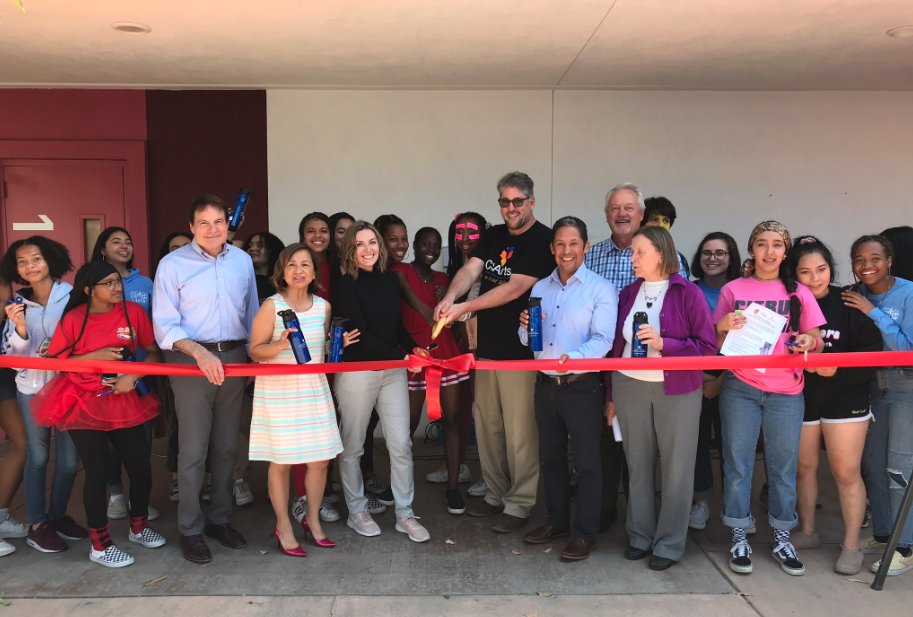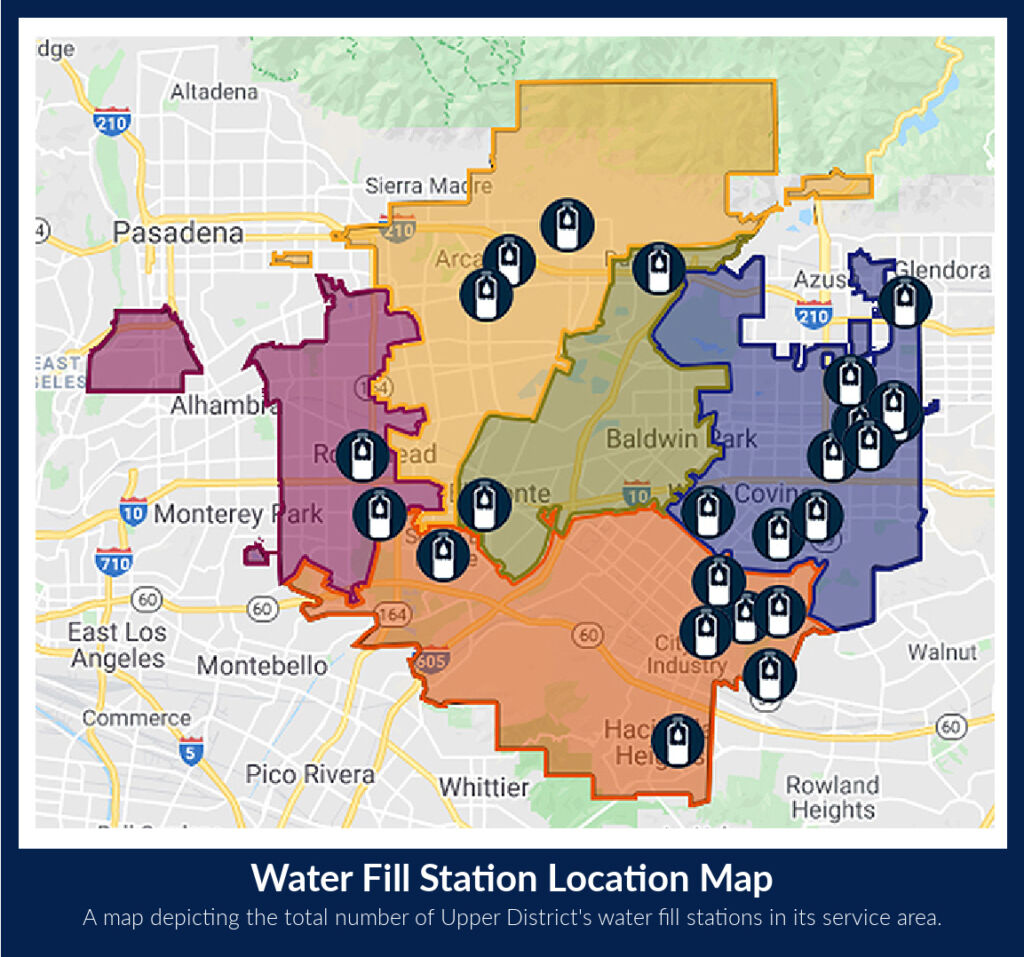
Water Fill Station Program – CURRENTLY CLOSED
Upper District’s Water Fill Station Program involves the installation of water bottle filling stations at designated public facilities located within Upper District’s service area that receive high pedestrian traffic or provide recreational activity. The program provides accessibility to tap water, highlighting the quality of tap water while providing an alternative to obtaining water in one-time use plastic bottles. The production, packaging, and transportation of one-time use plastic bottles is both water and energy intensive creating a long-term negative impact on the environment.
Water Fill Station Location Map
The locations of the water fill stations throughout Upper District’s service area can be found by clicking the map to the right.
Fact Sheets
Upper District is debunking the myths behind drinking from the tap with these informative and fact based handouts. Trust in your tap.
Program Benefits
- Reduced amount of water and other resources used in production and transportation of bottled water.
- Decreased plastic bottle debris making its way into our local watersheds/waterways, degrading water quality and damaging local habitat.
- Reduced plastic waste ending up in landfills.
- Raised awareness about the quality and safety of drinking tap water.
- Increased understanding regarding sustainability of natural resources and protecting our local water sources.
Benefits of Tap Water
Tap water is inexpensive. It costs about a penny a gallon in most communities and using it can save you money and help protect the environment. There are many reasons to choose tap water over bottled water. Here are a few of them:
- Tap water is regulated for safety. Tap water is regulated by the Environmental Protection Agency (EPA) and must meet stringent quality requirements. Water treatment plants that provide tap water must be tested multiple times per day, and every water provider in the country is required to provide consumers with detailed water quality reports to assure its compliance with EPA standards.
- Use of refillable bottles, stainless steel or plastic, will be a valuable “lesson” for kids and set them on a path towards responsible environmental practices. You’ll be putting more than a reusable bottle in their backpack – you’ll be inspiring the next generation of environmentally conscious consumers.
Impact of Single-Use Plastic Bottles
The resources required to produce the plastic bottles and to deliver filled bottles to consumers, including both energy and water, is substantial. The Pacific Institute determined that the production of water bottles for American water bottle consumption in 2006 alone:
- Took 3 liters of water to produce 1 liter of bottled water.
- Required more than 17 million barrels of oil, not including the energy for transportation.
- Produced more than 2.5 million tons of carbon dioxide.
Program Contact
Jennifer Aguilar, Water Use Efficiency Analyst
jennifer@usgvmwd.org
(626) 443-2297
